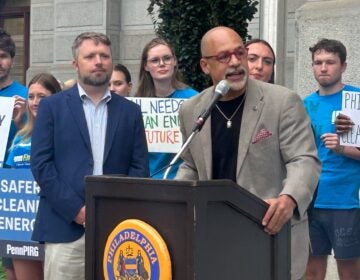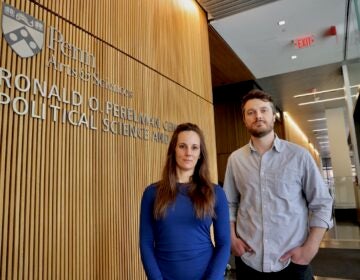At western Pa. climate change summit, one scientist says effects can be managed if emissions are cut
Pennsylvania’s ecosystem has already been permanently altered due to climate change, but it’s not too late to act before these changes become unmanageable, experts say.

Pennsylvania’s ecosystem has already been permanently altered but scientist says effects can be managed if emissions are cut. (REDPIXEL.PL/BigStock)
This article was originally published on StateImpact Pennsylvania.
–
Pennsylvania’s ecosystem has already been permanently altered due to climate change, but it’s not too late to act before these changes become unmanageable, experts say.
“For example, we’re getting more of our precipitation is happening in very heavy events that lead to flash flooding … and we can expect them to increase into the future,” said Penn State University’s Ray Najjar.
Heavy precipitation can cause significant infrastructure damage and exacerbate sewer overflows.
“If we choose, however, to reduce our emissions, we’ll probably still continue to see those effects, but to a much more manageable degree,” he said.
Najjar is an oceanographer who studies climate change and is one of the scientists who contributed to the 2015 Pennsylvania Climate Impact Assessment, a state-mandated report.
While presenting Wednesday at a climate change summit, sponsored by the city of Pittsburgh and the Heinz Endowments, Najjar said that if emissions continue increasing at the current rate, by the middle of this century Pittsburgh will have a climate resembling that of Knoxville, Tenn.
“One of the most important characteristics of a place is its climate and its weather,” he said.
Najjar said that it’s conceivable that parts of Pennsylvania may not longer get snow. Already plants are blooming earlier, the climate is wetter, and the snowshoe hare population is decreasing.
Eventually, Pennsylvania’s state tree, the Eastern Hemlock, might disappear from most of the state due to increased populations of the woolly adelgid, an insect that feeds on the hemlock’s sap. Woolly adelgid numbers increase after warmer winters.
“Ecosystems are very delicate,” Najjar said, adding that human activity is, “basically throwing a monkey wrench into the system.”
Vector-borne diseases, such are Lyme disease, are on the rise. People with chronic diseases, like asthma, are also expected to suffer more.
But the future might not be so dire if the energy infrastructure transitions away from fossil fuels and toward renewables.
“We know how to deploy solar energy and wind energy. We need improvements with our grid to transmit that energy. We also need investments in battery and storage of energy,” Najjar said. “We need to continue to invest in techniques to pull carbon dioxide out of the atmosphere.”
Najjar is hopeful, “based on the fact that we have faced other pretty serious environmental issues in the past, such as really horrible air quality that we have had in this country.”
We have about a decade, he said, to make significant changes, so that the future climate won’t pose such an existential threat.
WESA receives funding from the Heinz Endowments.
WHYY is your source for fact-based, in-depth journalism and information. As a nonprofit organization, we rely on financial support from readers like you. Please give today.




